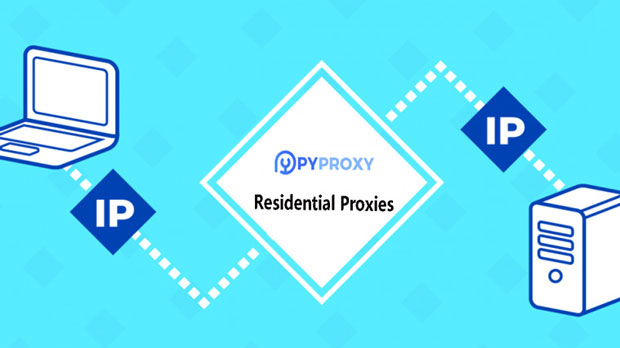When navigating the world of online privacy and anonymity, many users turn to proxies to safeguard their browsing activity. socks5 proxies are particularly popular due to their flexibility and ability to handle various internet traffic types, including HTTP, FTP, and torrents. However, with countless free SOCKS5 proxies available, especially from U.S.-based lists, it can be overwhelming to identify the best ones for your needs. In this article, we will explore the key factors you need to consider when selecting a free socks5 proxy, ensuring you make an informed and secure choice for browsing, streaming, or other online activities. By the end, you will know how to assess these proxies based on reliability, speed, security, and overall performance. 1. Understand the Basics of SOCKS5 ProxyBefore diving into the specifics of selecting the best free socks5 proxy from a U.S. list, it’s important to understand what SOCKS5 proxies are and how they differ from other proxy types. SOCKS5 is an advanced version of the SOCKS protocol that can handle a wide range of traffic, including TCP and UDP connections. It provides higher flexibility and greater compatibility with different protocols compared to other proxies like HTTP proxies.The key advantage of SOCKS5 over other types is its ability to support a variety of data types and its enhanced ability to route internet traffic through multiple layers of encryption. However, since free SOCKS5 proxies often come with limitations, understanding the protocol's strengths will help you better judge the performance and security of a proxy.2. Criteria for Selecting the Best Free SOCKS5 ProxyOnce you have a basic understanding of SOCKS5 proxies, it’s time to consider the key factors when selecting a free proxy from a U.S. list. These factors include reliability, speed, security, location, and the proxy’s usage restrictions. Let’s take a closer look at each of these elements.2.1. ReliabilityReliability is crucial when selecting a proxy, especially for activities that require a stable and consistent connection, such as streaming or gaming. Free proxies, particularly those listed in public directories, may be unreliable due to high user traffic and lack of maintenance. As such, when selecting a SOCKS5 proxy, you should prioritize proxies that are regularly updated and have positive feedback regarding uptime.Look for proxies with a reputation for low downtime and frequent updates, as well as proxies that offer backup options in case of connectivity issues. Proxies that are updated frequently tend to offer better reliability since the provider will often remove or replace non-functional servers.2.2. Speed and LatencyAnother important factor in choosing a free SOCKS5 proxy is speed. Proxy performance is often evaluated based on speed and latency, and these can be especially critical when performing activities like streaming, browsing, or downloading large files. Free proxies tend to be slower due to high user volumes and lower-quality infrastructure, so you’ll want to pay attention to the reported speeds.To assess the speed of a SOCKS5 proxy, it’s essential to conduct speed tests or look for feedback from other users who have tested the proxy’s performance. A good free SOCKS5 proxy should offer minimal latency and a decent download/upload speed, suitable for everyday browsing or streaming.2.3. Security and AnonymityWhile SOCKS5 proxies offer a level of security by masking your IP address, not all free proxies are created equal in terms of privacy and security. Free SOCKS5 proxies may expose your data to third parties or may not use adequate encryption, making your online activities vulnerable to interception. Therefore, it’s critical to evaluate the security protocols implemented by the proxy.When selecting a free SOCKS5 proxy, check if it supports secure encryption protocols like SSL/TLS, which enhance the security of your data. Be aware that some free proxies may log your activity, which could compromise your privacy. Always seek proxies that have clear privacy policies and do not retain any logs of your online activity.2.4. Proxy Location and GeolocationThe location of the socks5 proxy server plays a significant role in your internet experience. For users looking to access content restricted to specific regions, such as U.S.-only websites or streaming services, choosing a proxy located in the desired geographic area is essential.U.S.-based free SOCKS5 proxies are ideal if you need access to U.S.-based content or services. However, keep in mind that the performance of a proxy can be impacted by its geographical distance from your physical location. A U.S.-based proxy server may be slower if you're accessing it from a distant location outside the U.S., so always test the proxy’s performance to ensure it meets your speed and accessibility requirements.2.5. Usage RestrictionsMany free proxies come with certain limitations that could affect their usability. Common restrictions include limited bandwidth, time limitations, or daily usage caps. When evaluating free SOCKS5 proxies, always check for any usage restrictions and determine if they align with your needs.For example, if you plan to use a proxy for torrenting or streaming, it’s crucial to choose a proxy that supports unlimited bandwidth and has no time or data usage limitations. Proxies with caps on bandwidth or session duration may not be suitable for heavy online tasks.3. Evaluating the Proxy’s PerformanceOnce you’ve considered the primary selection criteria, it’s time to evaluate the actual performance of the proxy. Testing the SOCKS5 proxy before committing to its use is essential to ensure it meets your expectations. Here are some ways to test the proxy’s performance:- Speed Tests: Conduct speed tests to determine the download and upload speeds, as well as latency. Ensure that the proxy does not significantly degrade your internet speed.- Connection Stability: Test the connection over an extended period to evaluate stability. Frequent disconnections or slow response times could indicate a low-quality proxy.- Anonymity Checks: Perform IP address leakage tests to ensure that the proxy effectively hides your IP address. Websites like "pyproxy.com" can help you verify the success of the proxy’s anonymity features.4. Potential Risks of Using Free SOCKS5 ProxiesWhile free SOCKS5 proxies can be tempting due to their lack of cost, it’s essential to be aware of the risks involved in using them. Some free proxies may expose your data to malicious third parties, potentially leading to privacy breaches, data theft, or even malware infections. Additionally, free proxies are often less secure and may not provide the encryption you need to safeguard your online activities.Another risk of free SOCKS5 proxies is the potential for inconsistent performance. These proxies often experience high demand, which can lead to server overloads, slow speeds, and downtime. If your online activities require a reliable and secure connection, it’s worth considering paid options that guarantee better performance, security, and reliability.5. ConclusionSelecting the best free SOCKS5 proxy from a U.S. proxy list requires careful consideration of several factors, including reliability, speed, security, location, and usage restrictions. While free proxies can offer a basic level of anonymity and bypass geographical restrictions, they often come with limitations that can affect your experience. By prioritizing key criteria such as security, speed, and reliability, you can ensure that you select a proxy that suits your online needs.However, it’s important to remember that free SOCKS5 proxies often come with risks, such as data exposure and inconsistent performance. If privacy and performance are paramount, investing in a paid proxy service might be the best choice for you. Always test the proxies thoroughly before use, and make sure they align with your specific online needs and expectations.
Jan 06, 2025






















































